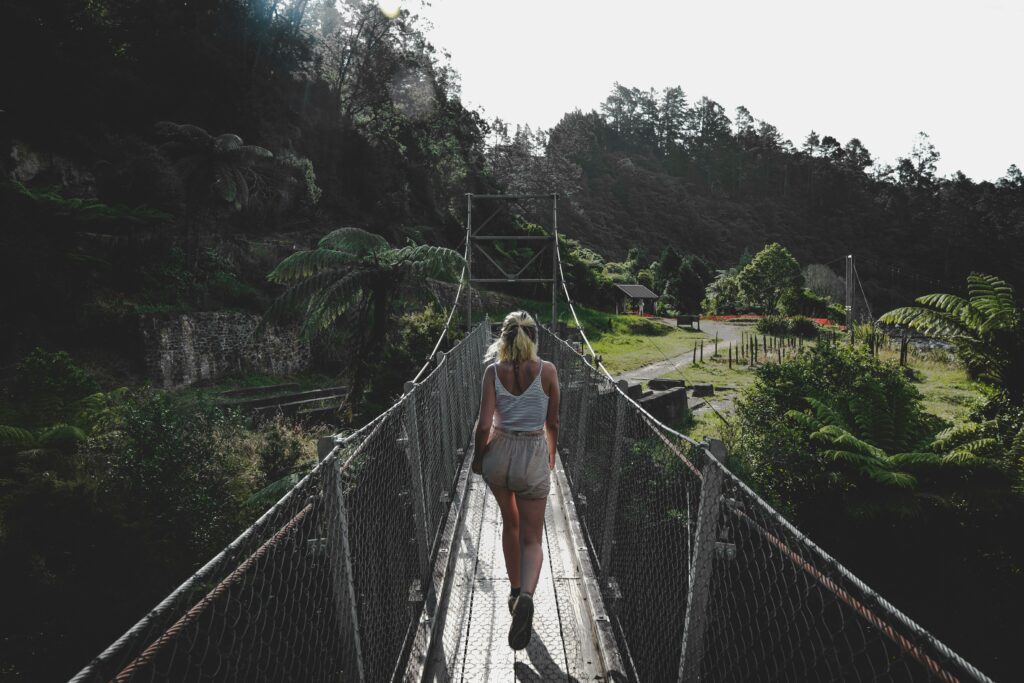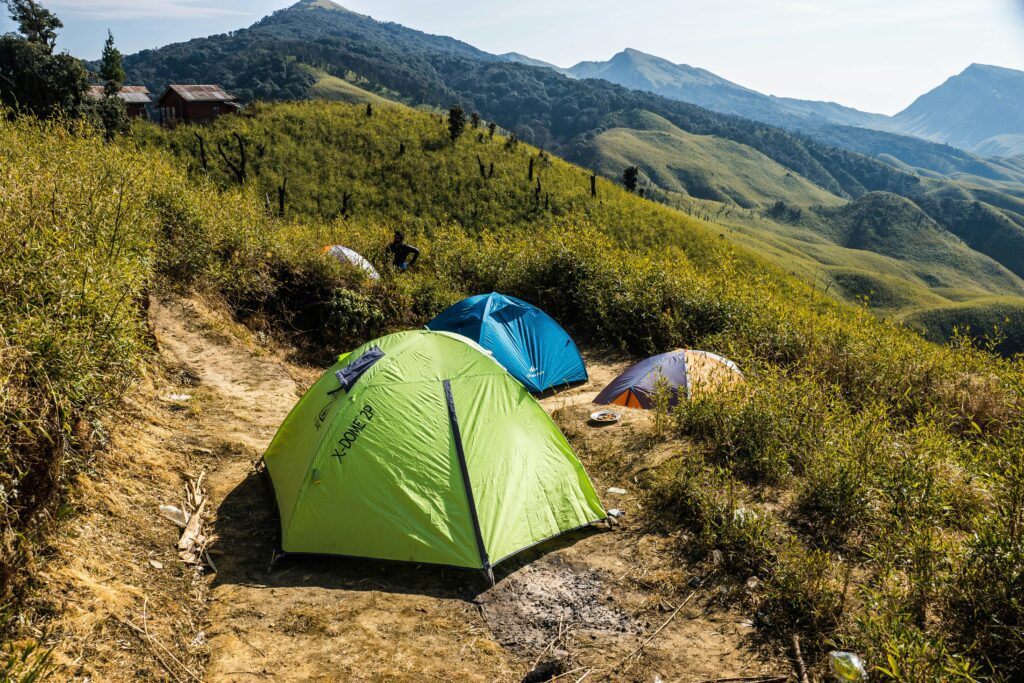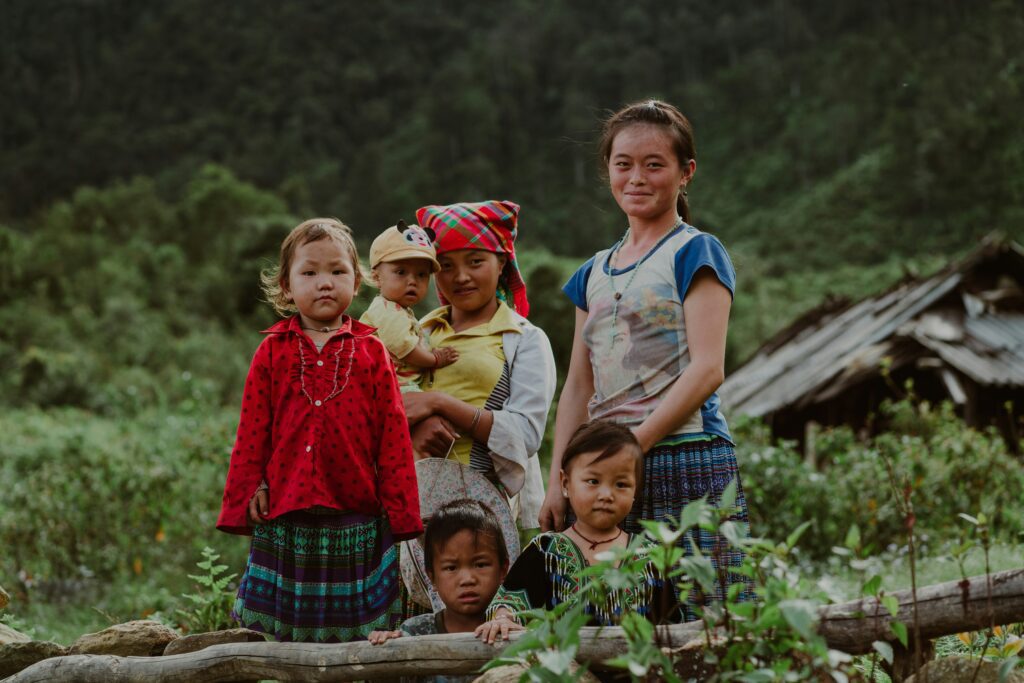Introduction
Dzukou Valley, nestled between the states of Nagaland and Manipur, is one of India’s most picturesque and least explored travel destinations. Known for its lush green meadows, vibrant wildflowers, and the famous Dzukou Lily, this valley is a paradise for nature lovers, trekkers, and adventurers. This travel blog will guide you through everything you need to know about visiting Dzukou Valley—how to get there, the best time to visit, trekking tips, and more. By the end, you’ll see why Dzukou Valley is considered one of Northeast India’s hidden treasures.

Table of Contents
1. Overview of Dzukou Valley
Dzukou Valley sits at an altitude of about 2,452 meters above sea level. It is famous for its stunning landscapes, serene atmosphere, and rich biodiversity. Often called the “Valley of Flowers of the Northeast,” this valley transforms into a colourful paradise during the monsoon season when countless species of wildflowers bloom. Located near the state capital of Nagaland, Kohima, Dzukou Valley is a trekker’s dream with scenic trails, crystal-clear rivers, and panoramic views of rolling hills.
2. How to Reach Dzukou Valley
Reaching Dzukou Valley involves a combination of road travel and trekking. There are two main routes to access the valley: from Nagaland and Manipur. Both routes offer different experiences, but the journey from Nagaland is more popular due to easier accessibility.
- From Nagaland (Kohima Route): Start your journey from Kohima, the capital of Nagaland. You can hire a taxi or take a shared vehicle to either Zakhama or Viswema, the two base points for the trek to Dzukou Valley. Viswema is the more commonly chosen route since the initial stretch of the trek is easier and you can also drive a little further up the route before starting the trek.
- From Manipur (Senapati Route): If you’re coming from Manipur, you can trek to Dzukou Valley from Mao or Senapati. The trek is a bit longer but equally beautiful, with scenic views of the surrounding hills and valleys.
3. Best Time to Visit Dzukou Valley
Timing your visit to Dzukou Valley is essential if you want to experience its full beauty.
- Monsoon Season (June to September): This is the best time to visit if you want to witness the valley in full bloom. During these months, the valley is carpeted with a variety of wildflowers, including the famous Dzukou Lily. The weather is pleasant, though it can rain occasionally, so carrying waterproof gear is recommended.
- Winter Season (November to February): If you prefer cooler temperatures and want to experience the valley covered in snow, winter is the ideal time. Although the flowers won’t be in bloom, the valley’s landscape transforms into a white wonderland, perfect for those seeking a peaceful winter trek.
4. Trekking in Dzukou Valley
Trekking is the main activity in Dzukou Valley. The trek to the valley offers a moderate challenge, suitable for both beginners and seasoned trekkers.
- Viswema Route: This is the easiest of the two main trekking routes. From Viswema village, you can take a taxi up to a certain point before beginning the trek. The trek involves a gradual ascent and takes about 4-5 hours to reach the valley.
- Zakhama Route: The Zakhama route is a bit more challenging due to its steep initial ascent. However, it is more direct and shorter than the Viswema route, taking about 3-4 hours to complete.
Both routes will lead you through dense forests, bamboo thickets, and eventually, into the open grasslands of Dzukou Valley. Once you reach the valley, the beauty of the rolling hills and the clear blue sky is an instant reward for your efforts.

5. Camping and Accommodation in Dzukou Valley
One of the best ways to experience Dzukou Valley is by camping overnight. There is a basic guesthouse at the base camp where you can stay, but most visitors prefer to bring tents and camp in the valley itself. Camping gives you the chance to wake up to breathtaking sunrises and immerse yourself in the tranquil surroundings.
If you decide to stay at the guesthouse, they also provide tents and sleeping bags for rent. It’s advisable to carry your own food and water, though there is a small kitchen that serves simple meals at the guesthouse.

6. Flora and Fauna of Dzukou Valley
Dzukou Valley is home to a wide variety of plant and animal life. The most famous flower found in the valley is the Dzukou Lily, which is endemic to this region and blooms in abundance during the monsoon season. The valley is also rich in wildflowers such as rhododendrons, lilies, and aconitums, making it a paradise for botany enthusiasts.
In terms of fauna, you may spot wild boars, various species of birds, and even an occasional Himalayan bear. Birdwatchers will enjoy the sight of many migratory birds and other rare species that visit the valley.
7. Cultural Significance of Dzukou Valley
Dzukou Valley holds special cultural and spiritual significance for the local tribes, particularly the Angami Naga tribe. The valley is considered sacred, and many rituals and traditions are linked to this region. Visitors are encouraged to respect the customs and practices of the local communities while exploring the valley.
If you visit in December, consider timing your trip with the Hornbill Festival, which takes place in Kohima. The festival is a celebration of Nagaland’s diverse culture and traditions, featuring music, dance, and food. After experiencing the festival, many travellers head to Dzukou Valley for an unforgettable trekking adventure.

8. Tips for a Memorable Trip to Dzukou Valley
Here are some essential tips to make your trip to Dzukou Valley smooth and enjoyable:
- Plan for a 2-Day Trip: While it’s possible to trek to the valley and back in a single day, staying overnight gives you more time to explore and enjoy the valley’s beauty.
- Pack Light but Smart: Carry only essentials like warm clothing (it can get cold at night, especially in winter), a first-aid kit, enough water, and energy-packed snacks.
- Respect Nature: The valley is an eco-sensitive zone, so it’s important to follow eco-friendly practices. Carry your waste back with you and avoid leaving any litter behind.
- Hire a Local Guide: While the trekking paths are well-marked, hiring a local guide ensures you don’t miss out on hidden gems along the trail, and it also supports the local economy.
- Stay Hydrated and Eat Well: The trek can be physically demanding, so stay hydrated and carry energy-boosting food. There are no shops along the trekking route, so be sure to pack enough supplies.
9. Nearby Attractions
If you have more time to explore, several nearby attractions complement your trip to Dzukou Valley:
- Kohima War Cemetery: A historical site built in memory of soldiers who fought in World War II’s Battle of Kohima. This beautifully maintained cemetery is a peaceful spot with panoramic views of the city.
- Khonoma Village: Known as Asia’s first “Green Village,” Khonoma is an eco-friendly destination where you can learn about sustainable practices, meet local tribes, and enjoy more scenic hikes.
- Japfu Peak: For those looking for a more challenging trek, Japfu Peak, located near Dzukou Valley, offers a tough climb but rewards you with stunning views of the surrounding landscape.
10. Conclusion
Dzukou Valley is a destination that should be on every traveller’s bucket list. Whether you’re a seasoned trekker or someone looking to connect with nature, this valley offers an unparalleled experience. From the blooming wildflowers in the monsoon to the snow-covered hills in winter, every season brings a new perspective on this hidden gem.
Plan your trip to Dzukou Valley and witness the magic of Northeast India’s natural beauty. The valley’s peaceful atmosphere, combined with its untouched landscapes, will leave you with memories that last a lifetime.
